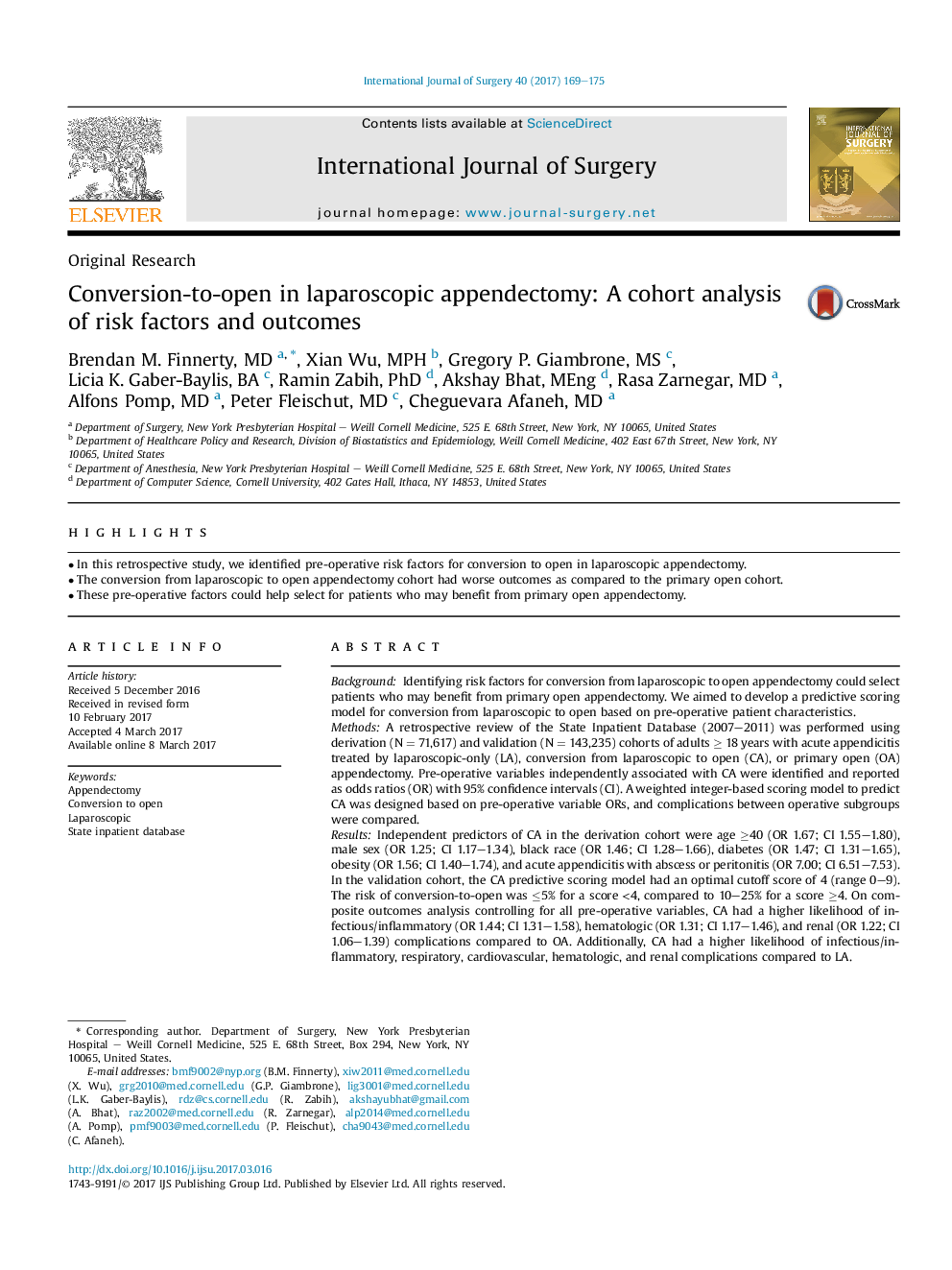| Article ID | Journal | Published Year | Pages | File Type |
|---|---|---|---|---|
| 5732288 | International Journal of Surgery | 2017 | 7 Pages |
â¢In this retrospective study, we identified pre-operative risk factors for conversion to open in laparoscopic appendectomy.â¢The conversion from laparoscopic to open appendectomy cohort had worse outcomes as compared to the primary open cohort.â¢These pre-operative factors could help select for patients who may benefit from primary open appendectomy.
BackgroundIdentifying risk factors for conversion from laparoscopic to open appendectomy could select patients who may benefit from primary open appendectomy. We aimed to develop a predictive scoring model for conversion from laparoscopic to open based on pre-operative patient characteristics.MethodsA retrospective review of the State Inpatient Database (2007-2011) was performed using derivation (N = 71,617) and validation (N = 143,235) cohorts of adults â¥Â 18 years with acute appendicitis treated by laparoscopic-only (LA), conversion from laparoscopic to open (CA), or primary open (OA) appendectomy. Pre-operative variables independently associated with CA were identified and reported as odds ratios (OR) with 95% confidence intervals (CI). A weighted integer-based scoring model to predict CA was designed based on pre-operative variable ORs, and complications between operative subgroups were compared.ResultsIndependent predictors of CA in the derivation cohort were age â¥40 (OR 1.67; CI 1.55-1.80), male sex (OR 1.25; CI 1.17-1.34), black race (OR 1.46; CI 1.28-1.66), diabetes (OR 1.47; CI 1.31-1.65), obesity (OR 1.56; CI 1.40-1.74), and acute appendicitis with abscess or peritonitis (OR 7.00; CI 6.51-7.53). In the validation cohort, the CA predictive scoring model had an optimal cutoff score of 4 (range 0-9). The risk of conversion-to-open was â¤5% for a score <4, compared to 10-25% for a score â¥4. On composite outcomes analysis controlling for all pre-operative variables, CA had a higher likelihood of infectious/inflammatory (OR 1.44; CI 1.31-1.58), hematologic (OR 1.31; CI 1.17-1.46), and renal (OR 1.22; CI 1.06-1.39) complications compared to OA. Additionally, CA had a higher likelihood of infectious/inflammatory, respiratory, cardiovascular, hematologic, and renal complications compared to LA.ConclusionsCA patients have an unfavorable complication profile compared to OA. The predictors identified in this scoring model could help select for patients who may benefit from primary open appendectomy.
